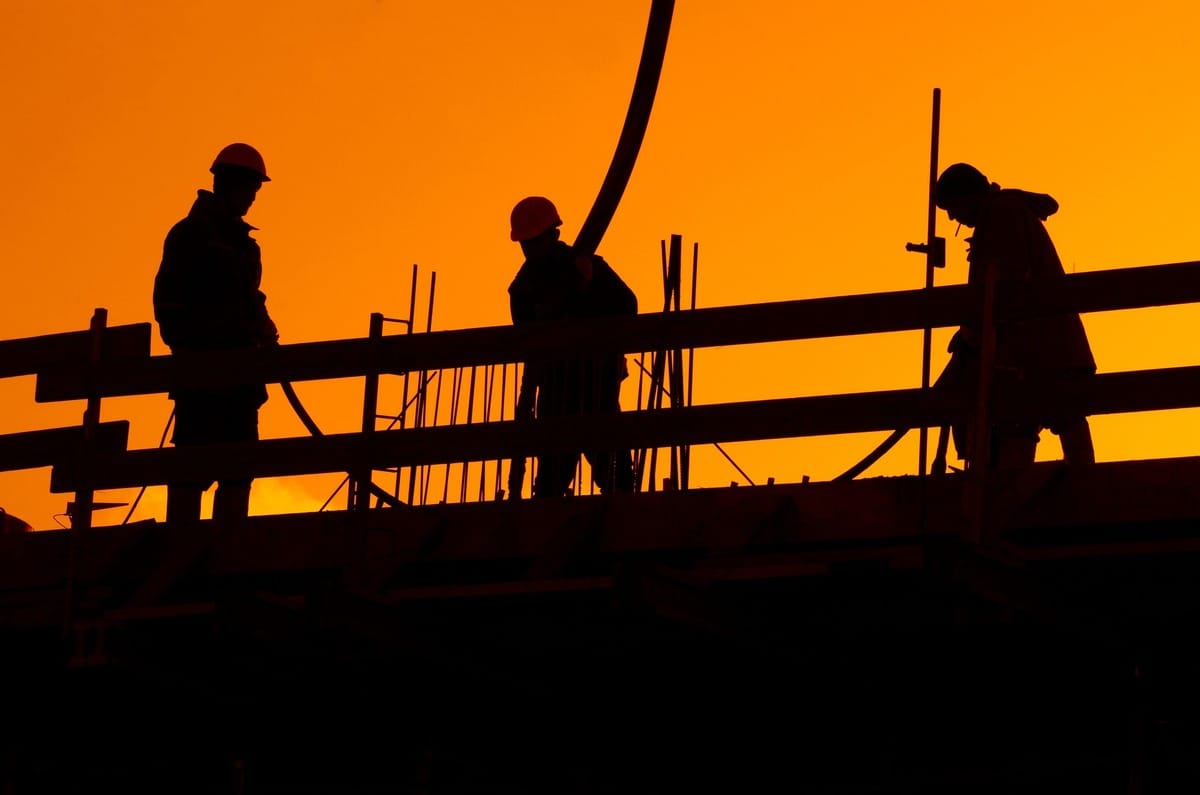- Full Brim Safety
- Posts
- Safe Work Practices Around Power Lines - Overhead and Underground
Safe Work Practices Around Power Lines - Overhead and Underground
Full Brim Safety: Build Smart, Build Safe

Safe Work Practices Around Power Lines - Overhead and Underground
Welcome back, let's Build Smart & Build Safe! Yesterday, we laid the foundation by understanding the fundamental risks of electricity. Today, we're focusing on one of the most significant electrical hazards on construction sites: power lines, both the visible overhead lines and the unseen underground utilities. Ignoring the dangers posed by these lines can have catastrophic consequences.
Overhead Power Lines: Maintaining a Safe Distance
Overhead power lines carry high voltage electricity, and direct contact is almost always fatal. Even getting too close can cause the electricity to arc or jump, resulting in severe burns and electrocution.
Key Safe Work Practices Around Overhead Power Lines:
Awareness is Paramount: Always be aware of the location of all overhead power lines on and around the job site before starting any work.
Maintain Required Clearance: OSHA regulations specify minimum safe working distances from energized power lines based on their voltage. Treat all overhead lines as energized unless positively verified otherwise by a qualified professional.
Equipment Operation: Exercise extreme caution when operating cranes, excavators, forklifts, and other equipment near power lines. Designate competent spotters to observe clearance and provide clear communication to the operator.
Material Handling: Be mindful of the length of materials being carried or lifted (e.g., ladders, pipes) to ensure they do not encroach on the safe clearance zone.
No Storage Under Power Lines: Never store materials or equipment directly beneath overhead power lines.
Assume All Lines Are Live: Do not assume a power line is de-energized. Only qualified utility personnel can confirm this.
If Contact Occurs:
Stay on the equipment: If your equipment contacts a power line, do not touch the ground. Warn others to stay away.
Attempt to move the equipment away from the line if it's safe to do so.
If you must exit, jump clear with both feet together and avoid touching the equipment and the ground simultaneously. Hop away, keeping both feet together.
Underground Utilities: Call Before You Dig!
While not visible, underground power lines and other utilities (gas, water, communication) pose a significant risk during excavation activities. Striking these lines can lead to electrocution, explosions, flooding, and service disruptions.
Key Safe Work Practices Around Underground Utilities:
Call Before You Dig (811): This is the law! Always call 811 at least a few business days before any excavation work begins. This notifies all utility companies in the area, and they will mark the approximate location of their underground lines.
Respect the Marks: Once utilities are marked (usually with colored flags or paint), maintain a safe distance (typically 18-24 inches on all sides) and never use mechanized equipment within this tolerance zone.
Hand Dig Within the Tolerance Zone: Use hand tools (shovels, probes) to carefully expose and verify the exact location of marked utilities within the tolerance zone.
Be Aware of Changes: Utility locations can sometimes be inaccurate. Proceed with caution and be alert for any signs of buried lines.
If Contact Occurs:
Stop work immediately.
Evacuate the area if there is a risk of explosion or immediate danger.
Notify the utility company and your supervisor immediately.
Do not attempt to repair or move the damaged line yourself.
Working safely around power lines, both above and below ground, requires vigilance, planning, and strict adherence to procedures. A moment of carelessness can have irreversible consequences. Always prioritize safety and remember the vital steps to protect yourself and your crew.
Tomorrow, we'll delve into the critical topic of grounding and bonding to understand how these measures protect us from electrical shock. Stay safe and stay aware!
Don't forget to sign your friends up for Full Brim Safety for your daily dose of construction safety tips!
-The Safety Man
